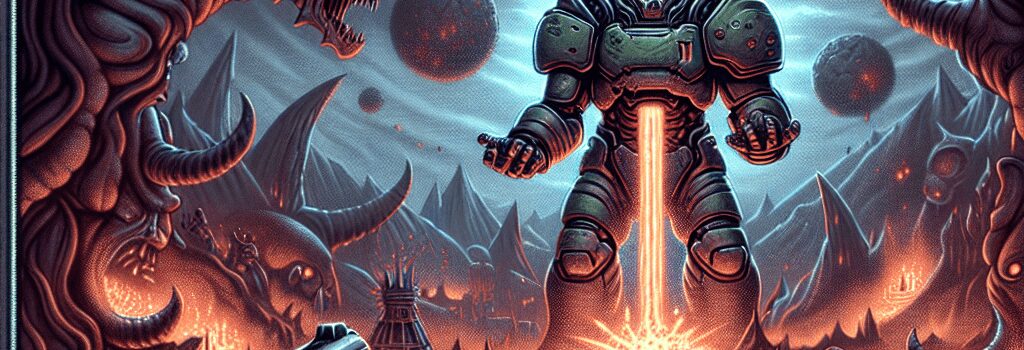Coincident Completes Doom II Map ‘Okuplok’ on Ultra-Violence

Overview of the Historic Achievement
Over a decade after its release, the infamous “Okuplok” slaughter map for Doom II—originally crafted by a reclusive DoomWorld mapper—has finally been completed on the game’s second‑hardest setting. Streamer Coincident endured a grueling six‑hour session, systematically dispatching all 23,211 demons in a single Ultra-Violence segment. The feat smashed the longstanding community barrier and underscores both human perseverance and the enduring technical depth of id Software’s 1994 classic.
Run Summary and Key Statistics
- Total Play Time: 6 hours, 3 minutes, 42 seconds
- Enemies Eliminated: 23,211
- Average Kill Rate: ~3,818 kills/hour (versus 3,800+ in earlier estimates)
- Difficulty: Ultra-Violence (UV), random damage model active
- Segments: Single-segment run (no reloads or mid-map save exploits)
- Platforms: Chocolate Doom 3.0.3 build on Windows 10 with source port enhancements
Historical Context
Released in early 2013, Okuplok’s slaughter map quickly garnered notoriety for cramped corridors packed with high-damage enemies. At its peak, only tool-assisted speedruns (TAS) demonstrated sub-two‑hour UV viability under frame-perfect inputs. Human attempts stalled at multi-segment strategies—it wasn’t until 2024 that Coincident first split the map into two UV segments, a run demanding 56 attempts and exhaustive practice.
Technical Analysis of Engine Constraints
Running the map on Ultra-Violence introduces two primary challenges: randomized damage and ammo scarcity. Unlike the deterministic model in TAS, UV uses a 0–255 damage RNG table on each hit, resulting in unpredictable one-shot deaths from hits that would normally glance off weaker armor. In addition, the map’s resource placement is sparse: standard ammo drops are reduced by 50% compared to lower difficulties. Coincident overcame these constraints via:
- Optimized Strafe Mechanics: Utilizing 8‑direction circle-strafing routines scripted in Lua macros, refined to 0.5° per-frame micro-adjustments.
- Predictive Ammo Management: Real‑time monitoring of pickup availability through a custom overlay, ensuring minimal waste and zero reserve overflow.
- Collision Exploit Mitigation: Disabling sprite clipping glitches while leveraging partial cover polygons to funnel projectiles back into hostile clusters.
Expert Opinions and Community Reaction
Speedrun analyst and Doom archivist Dr. Anita Feldman commented: “This run isn’t just about raw skill; it represents a milestone in understanding Doom’s core engine. Coincident’s dynamic decision tree—switching between rocket, plasma, and chaingun based on real-time RNG assessments—is as close to AI-level adaptivity as you’ll see in a human performance.”
DoomWorld forum veteran MapMaster42 added: “Okuplok was considered unapproachable on UV. Seeing a live human navigate every tight squeeze and pixel-perfect dodge is surreal. This run will inspire new mappers to push engine limits further.”
Additional Analysis: AI vs. Human Performance in Classic FPS
Recent research from MIT’s Game Intelligence Lab has employed reinforcement‑learning agents to tackle classic Doom levels. While agents achieve high kill counts, they still falter in tight halls where contextual awareness and split‑second risk evaluation are critical. Coincident’s run highlights the current gap between AI brute‑force tactics and the nuanced survival strategies of expert players.
Additional Analysis: Implications for Speedrunning Toolchains
This achievement also spotlights the evolution of speedrunning toolchains. Using the Chocolate Doom source port (v3.0.3) with community patches for high-resolution rendering, Coincident integrated a custom HUD plugin that tracks damage RNG outputs in real time. These developments may trickle into mainstream speedrun practice, standardizing real‑time data overlays for precision routing.
Future Prospects and Legacy
With Ultra-Violence conquered, the community now looks ahead. Potential next steps include:
- Attempting the map on Nightmare! difficulty (id’s one‑life, fast‑monsters mode).
- Incorporating AI-driven routing suggestions to minimize RNG pitfalls.
- Porting the level to modern engines like GZDoom for enhanced scripting experiments.
Coincident’s triumph not only closes a 12‑year chapter in Doom history but also sets the stage for new technical explorations, from AI-assisted routing to advanced modding frameworks.
Watch the Run
The full six‑hour marathon can be viewed on Coincident’s Twitch archive, with time‑stamped highlights available on YouTube. Enthusiasts and developers alike are dissecting each segment for insights into advanced movement, RNG management, and resource optimization.